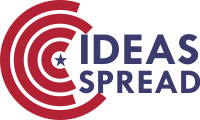The G-Qubit Theory Alternative to Conventional Tensor-Product Explanation of Entanglement
Abstract
Quantum computing rests upon two theoretical pillars: entanglement and superposition. But some physicists say that this is a very shaky foundation and quantum computing success will have to be based on a different theoretical foundation. The g-qubit theory supports this point of view. Current article is the second one of the two and about the entanglement. It gives different, more physically feasible, not mysterious, explanation of what the entanglement is. The suggested formalism demonstrates that the core of future quantum computing should not be in entanglement which only formally follows in conventional quantum mechanics from representation of the many particle states as tensor products of individual states. The core of quantum computing scheme should be in manipulation and transferring of wave functions on as operators acting on observables and formulated in terms of geometrical algebra. In this way quantum computer will be a kind of analog computer keeping and processing information by sets of objects possessing infinite number of degrees of freedom, contrary to the two value bits or two-dimensional Hilbert space elements, qubits.
References
[2] Soiguine, A. (2020). The Geometric Algebra Lift of Qubits and Beyond, LAMBERT Academic Publishing, 2020.
[3] Soiguine, A. (1915). Quantum state evolution in C2 and G3+. Science Research, 3(5), 240-247. [Online]. https://doi.org/10.48550/arXiv.1509.04148
[4] Soiguine, A. (2015). Geometric phase in the G3+ quantum state evolution. Cornell University, Quantum Physics, 23 October 2015. [Online]. https://doi.org/10.48550/arXiv.1511.02777
[5] Soiguine, A. (2015). Geometric Phase in Geometric Algebra Qubit Formalism, Saarbrucken: LAMBERT Academic Publishing, 2015.

This work is licensed under a Creative Commons Attribution 4.0 International License.
Copyright for this article is retained by the author(s), with first publication rights granted to the journal.
This is an open-access article distributed under the terms and conditions of the Creative Commons Attribution license (http://creativecommons.org/licenses/by/4.0/).








1.png)














